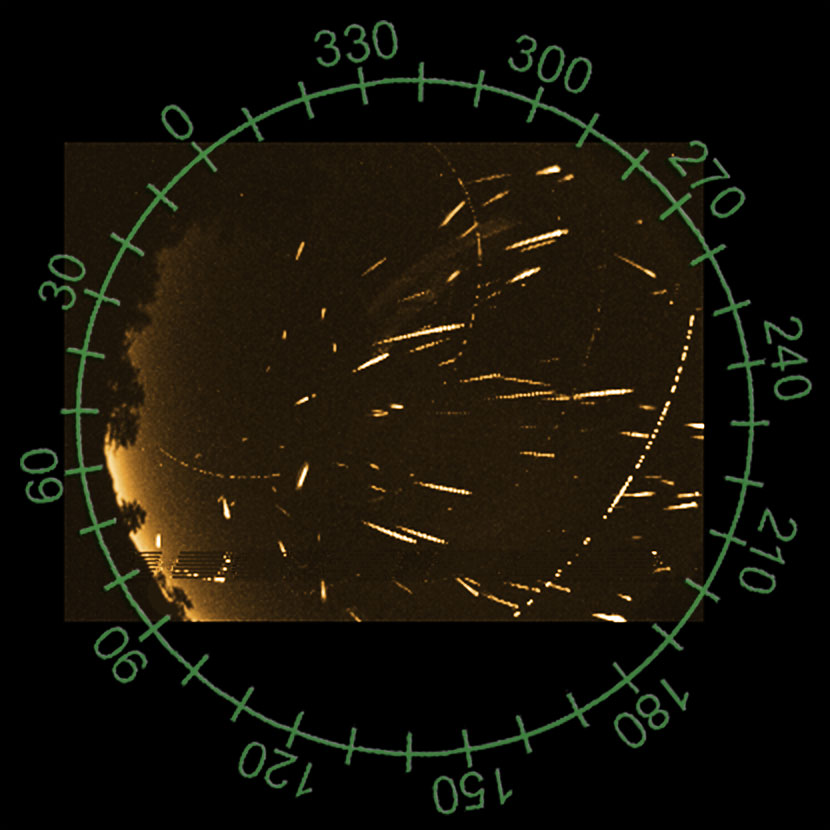AUGUST 17, 2009
Perseids from Perseus
EXPLANATION
Where are all of these meteors coming from? In terms of direction on the sky, the pointed answer is the constellation of Perseus. That is why the last week’s meteor shower was known as the Perseids—the meteors all appear to come from a radiant toward Perseus. Three dimensionally, however, sand-sized debris expelled from Comet Swift-Tuttle follows a well-defined orbit about our Sun, and the part of the orbit that approaches Earth is superposed in front of the Perseus. Therefore, when Earth crosses this orbit, the radiant point of falling debris appears in Perseus. Pictured above, a composite image of this year’s Pereids meteor shower shows many bright meteors that streaked through the sky on August 12. To the surprise of many, the next night, August 13, also showed many meteors, as demonstrated by rolling one’s cursor over the above image. This year’s Leonids meteor shower in November is expected by some to be exceptionally active, perhaps producing as many as 500 meteors per hour.
Credit & Copyright


